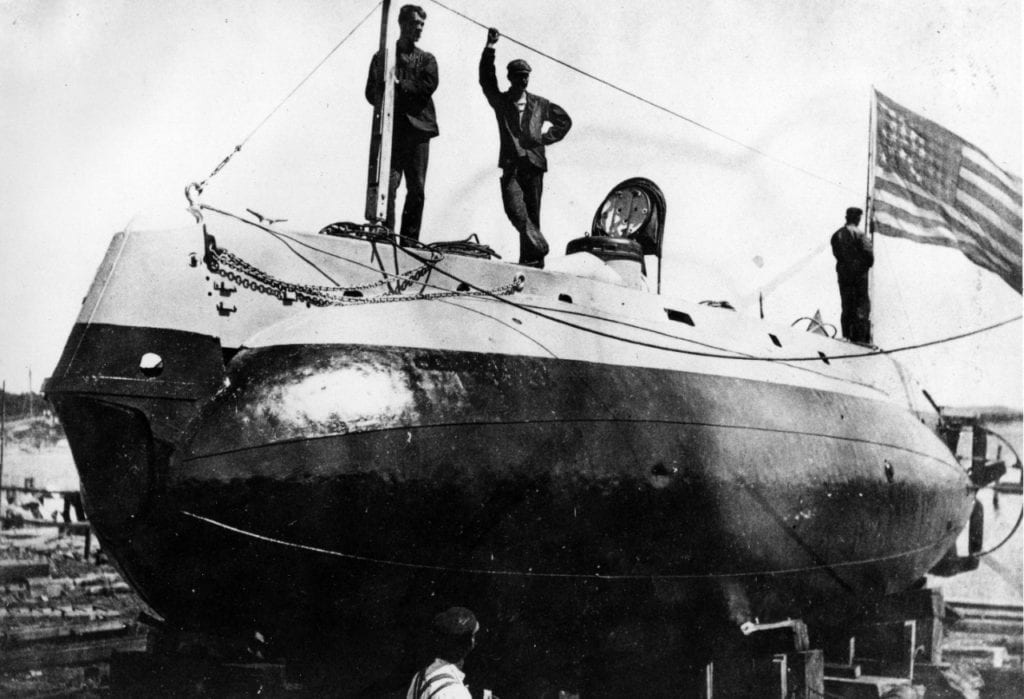
The Southeastern New England Defense Industry Alliance (SENEDIA) is recognizing National Submarine Day with a “TechTalk” featuring senior leaders from General Dynamics Electric Boat, as well highlighting men and women in the region who are employed in submarine construction related careers.
“Southeastern New England is the nation’s hub for submarine shipbuilding and undersea technology, and although the COVID-19 pandemic posed challenges for all businesses, our industry remains strong, with more rewarding opportunities ahead for those interested in the high-wage, high-growth, high-demand career pathways that are available across the defense landscape,” said Molly Donohue Magee, SENEDIA’s executive director. “National Submarine Day is a great opportunity for our colleagues across the industry to come together to celebrate our successes, share innovation, and grow the talent pipeline we need to continue to thrive.”
“National Submarine Day is an opportunity to remember the origins of the nation’s submarine shipbuilding industry, and to recognize the critical role that submarines have played in our national defense,” Magee said.
National Submarine Day, normally celebrated on April 11, commemorates the acquisition of the U.S. Navy’s first modern submarine, USS Holland (SS-1) in 1900. She was designed by inventor John Phillip Holland and built in Elizabeth, New Jersey, and commissioned in the US Navy on Oct. 12, 1900, at Newport, Rhode Island.
Holland was the first submarine with the seakeeping ability and endurance to conduct long transits, and the power to run submerged for any considerable distance. She had a six-man crew and could dive and maintain a depth of 75 feet. After the Navy purchased and evaluated USS Holland, they ordered six more of her type.
The inventor’s company, the Holland Torpedo Boat Company, later became Electric Boat.
General Dynamic Electric Boat executives, Sean Davies, vice president of Quonset Operations, and Andrew Bond, vice president of human resources, presented a virtual “TechTalk” on the scope, magnitude and growth of the U.S. Navy’s Columbia and Virginia-class submarine programs.
Electric Boat is experiencing significant hiring of trade and industrial skilled employees and growth and expansion at Electric Boat. In 2020, EB hired 2,000 people, mostly in the second half of the year due to earlier COVID limitations. In 2021, Bond said EB expects to hire 2,400 engineers, tradesmen and support personnel.
A network of partnerships of government, academic, nonprofit and business organization in Connecticut and Rhode Island are helping develop the qualified workforce that design and build the submarines of today and the future.
“We will put more than 1,000 people through those pipelines in Rhode Island, and we have a parallel pipeline in Connecticut,” said Davies. “Our training programs used to focus on either Connecticut or Rhode Island, but SENEDIA brings a cross state and region perspective, so we can expand into Massachusetts and further into New England.”
According to Magee, SENEDIA membership includes 130 companies, mostly in southeastern new England, but beyond as well supporting submarine construction and undersea technology. The organization has a contract from the DoD Industrial Base and Sustainment Office focused on submarine workforce development, specifically related to the trades and industrial skilled employees.
“The shipyards offer high-tech and high-wage jobs, and they are in high demand,” she said. “The Navy wants to make sure there is a strong pipeline of current and future workers for submarine construction and other naval shipbuilding needs. We can solve the need today, but we have to make sure we have the pipeline for tomorrow.”
- A Day to Remember - September 11, 2023
- Indo-Pacific Maritime Security Exchange will examine emerging capabilities and capacity - July 12, 2023
- Cold Waters Spark Warm Relationship - April 20, 2023






